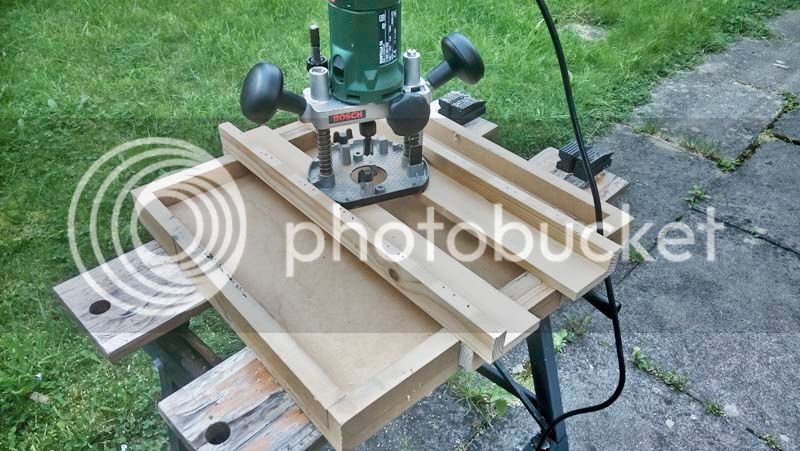54Strat
Member
Hi Guys,
To get me out from lurking, I was wondering if you could help out with a problem I've created through lack of attention.
I'm in the process of building a box, constructed with splined mitres and I've traditionally added the floating top and bottom panels in grooves and glued it all up. It's not that big, say 150mm x 150mm x 60mm and nothing special and all standard. It came to the point where I had to cut it in half horizontally to create the lid. Without a bandsaw or framesaw, I cut this by handsaw and unfortunately the cut drifted off by a couple of millimetres. I know, it was late and I wasn't paying attention.
So I'm left with having to take off up to about 2mm from the top and bottom edges of each half to square it all up. Fortunately the grain is such that a 4 to 5mm gap of grain wont be too noticeable so it is worth trying to save. I tried planing, but the grain at the mitres is very problematic. I thought about just sanding it down but would worry about keeping it square. I have also thought about re-designing the box, possibly adding a wide convex half finger hole to open it, and so removing the problematic saw drift.
Would anyone have any ideas how to best solve this? I use mainly hand tools, so I've no access to any serious machinery I'm afraid.
Cheers
Paul
To get me out from lurking, I was wondering if you could help out with a problem I've created through lack of attention.
I'm in the process of building a box, constructed with splined mitres and I've traditionally added the floating top and bottom panels in grooves and glued it all up. It's not that big, say 150mm x 150mm x 60mm and nothing special and all standard. It came to the point where I had to cut it in half horizontally to create the lid. Without a bandsaw or framesaw, I cut this by handsaw and unfortunately the cut drifted off by a couple of millimetres. I know, it was late and I wasn't paying attention.
So I'm left with having to take off up to about 2mm from the top and bottom edges of each half to square it all up. Fortunately the grain is such that a 4 to 5mm gap of grain wont be too noticeable so it is worth trying to save. I tried planing, but the grain at the mitres is very problematic. I thought about just sanding it down but would worry about keeping it square. I have also thought about re-designing the box, possibly adding a wide convex half finger hole to open it, and so removing the problematic saw drift.
Would anyone have any ideas how to best solve this? I use mainly hand tools, so I've no access to any serious machinery I'm afraid.
Cheers
Paul





